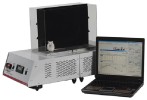Authors
V Jokinen, Y Sidorova, H Viisanen, I Suleymanova, H Tiilikainen, Z Li, T O Lilius, K Matlik, J E Anttila, M Airavaara, L Tian, P V Rauhala, E A Kalso
Lab
Department of Pharmacology, Faculty of Medicine, Haartmaninkatu 8 (Biomedicum), 00014 University of Helsinki, Helsinki, Finland
Journal
Neuroscience
Abstract
Development of tolerance is a well known pharmacological characteristic of opioids and a major clinical problem. In addition to the known neuronal mechanisms of opioid tolerance, activation of glia has emerged as a potentially significant new mechanism. We studied activation of microglia and astrocytes in morphine tolerance and opioid-induced hyperalgesia in rats using immunohistochemistry, flow cytometry and RNA sequencing in spinal- and supraspinal regions. Chronic morphine treatment that induced tolerance and hyperalgesia also increased immunoreactivity of spinal microglia in the dorsal and ventral horns. Flow cytometry demonstrated that morphine treatment increased the proportion of M2-polarized spinal microglia, but failed to impact the number or the proportion of M1-polarized microglia. In the transcriptome of microglial cells isolated from the spinal cord (SC), morphine treatment increased transcripts related to cell activation and defense response. In the studied brain regions, no activation of microglia or astrocytes was detected by immunohistochemistry, except for a decrease in the number of microglial cells in the substantia nigra. In flow cytometry, morphine caused a decrease in the number of microglial cells in the medulla, but otherwise no change was detected for the count or the proportion of M1- and M2-polarized microglia in the medulla or sensory cortex. No evidence for the activation of glia in the brain was seen. Our results suggest that glial activation associated with opioid tolerance and opioid-induced hyperalgesia occurs mainly at the spinal level. The transcriptome data suggest that the microglial activation pattern after chronic morphine treatment has similarities with that of neuropathic pain.
BIOSEB Instruments Used:
Thermal Place Preference, 2 Temperatures Choice Nociception Test (BIO-T2CT)

 Douleur - Allodynie/Hyperalgésie Thermique
Douleur - Allodynie/Hyperalgésie Thermique Douleur - Spontanée - Déficit de Posture
Douleur - Spontanée - Déficit de Posture Douleur - Allodynie/Hyperalgésie Mécanique
Douleur - Allodynie/Hyperalgésie Mécanique Apprentissage/Mémoire - Attention - Addiction
Apprentissage/Mémoire - Attention - Addiction Physiologie & Recherche Respiratoire
Physiologie & Recherche Respiratoire
 Douleur
Douleur Système Nerveux Central (SNC)
Système Nerveux Central (SNC)  Neurodégénérescence
Neurodégénérescence Système sensoriel
Système sensoriel Système moteur
Système moteur Troubles de l'humeur
Troubles de l'humeur Autres pathologies
Autres pathologies Système musculaire
Système musculaire Articulations
Articulations Métabolisme
Métabolisme Thématiques transversales
Thématiques transversales SFN2024: Venez rencontrer notre équipe sur le stand 876 à Chicago
SFN2024: Venez rencontrer notre équipe sur le stand 876 à Chicago 